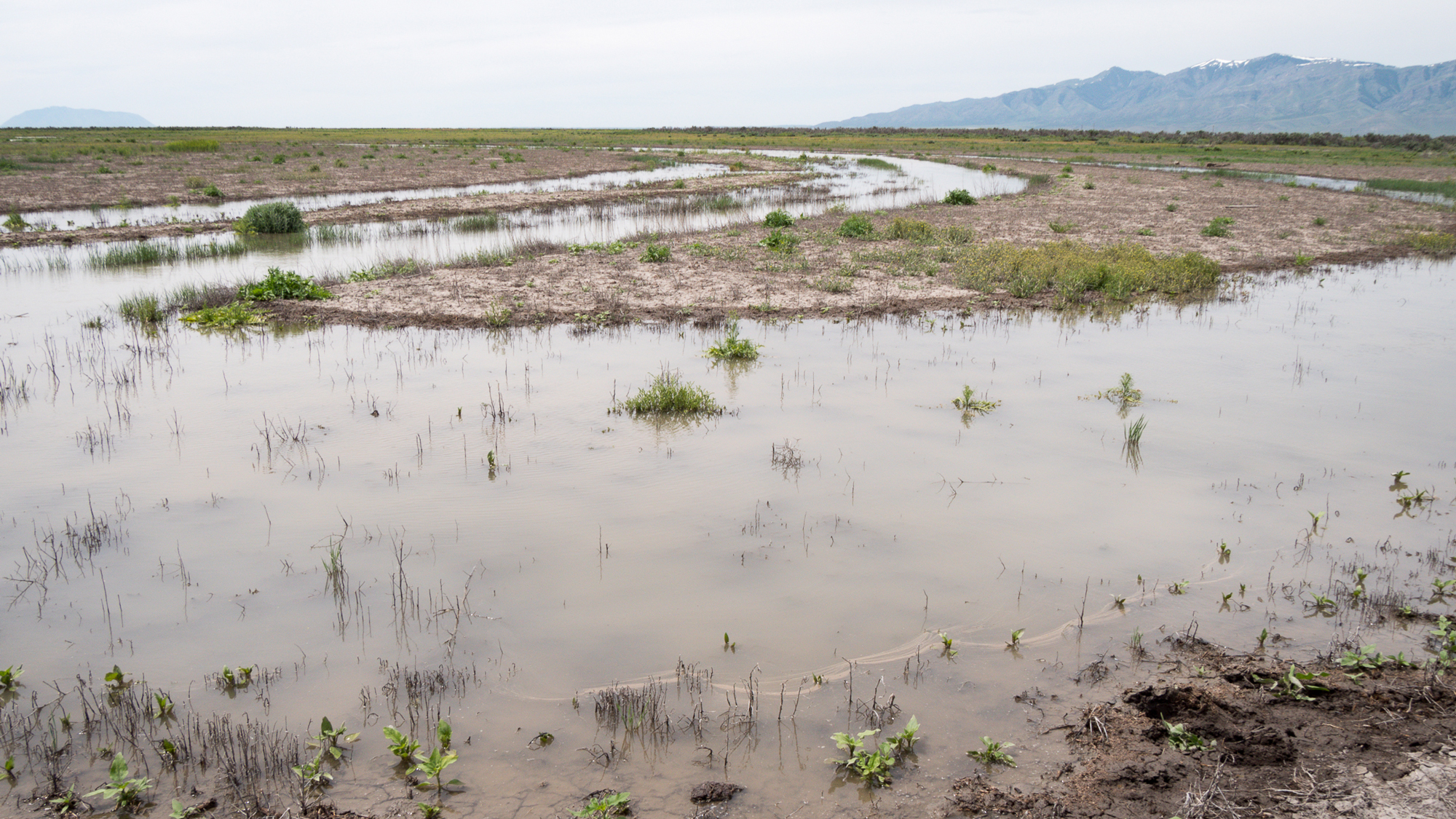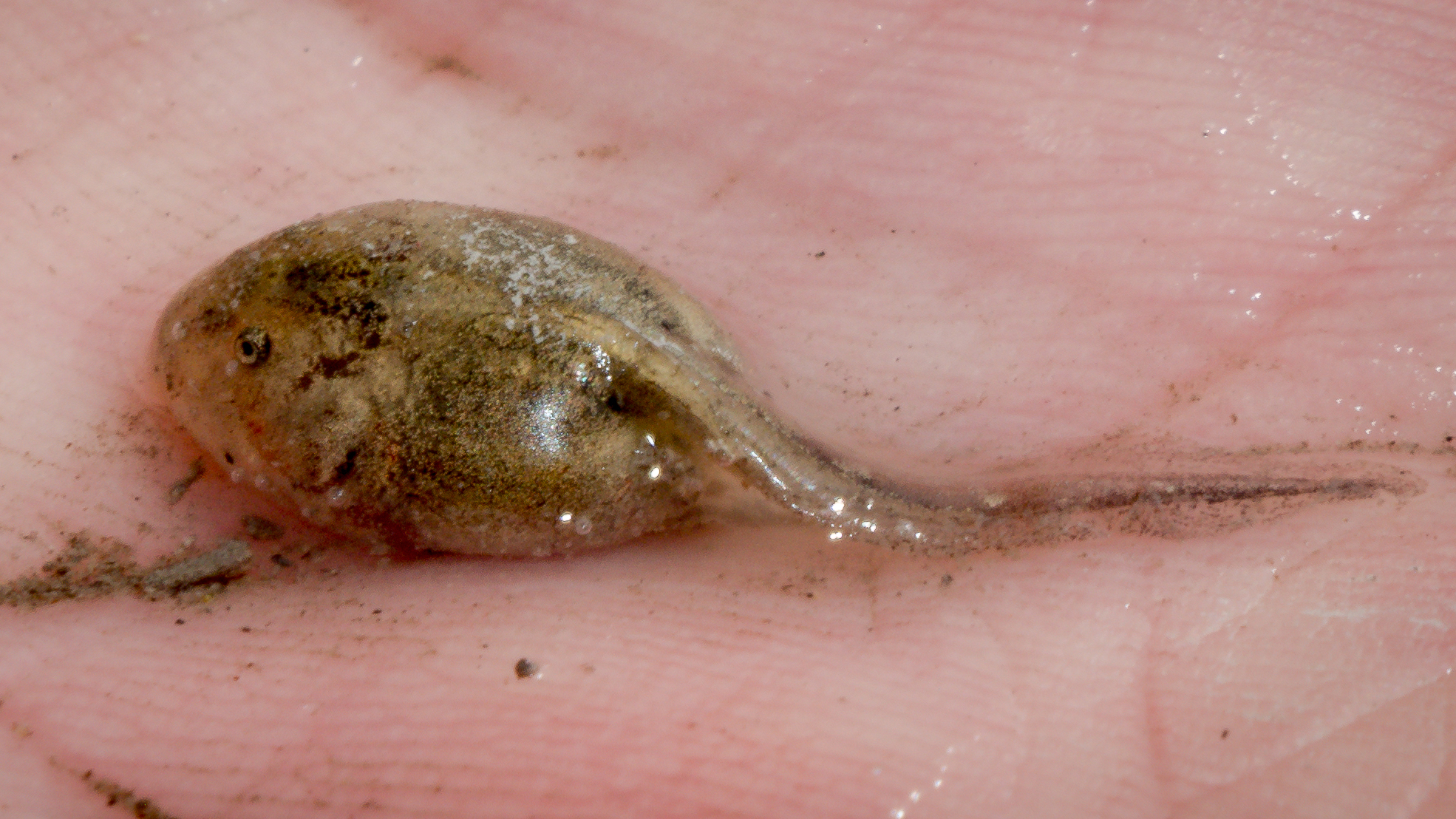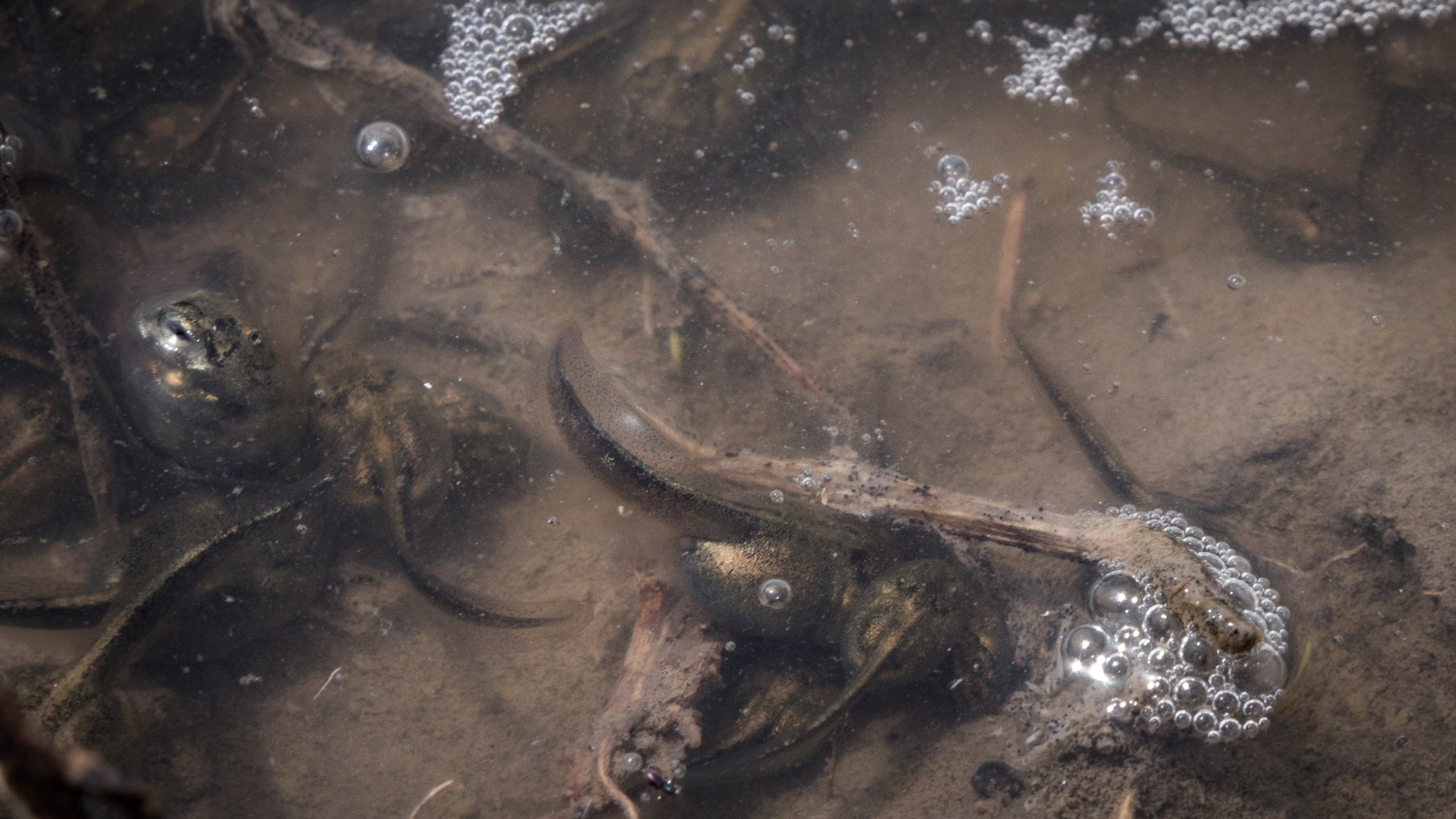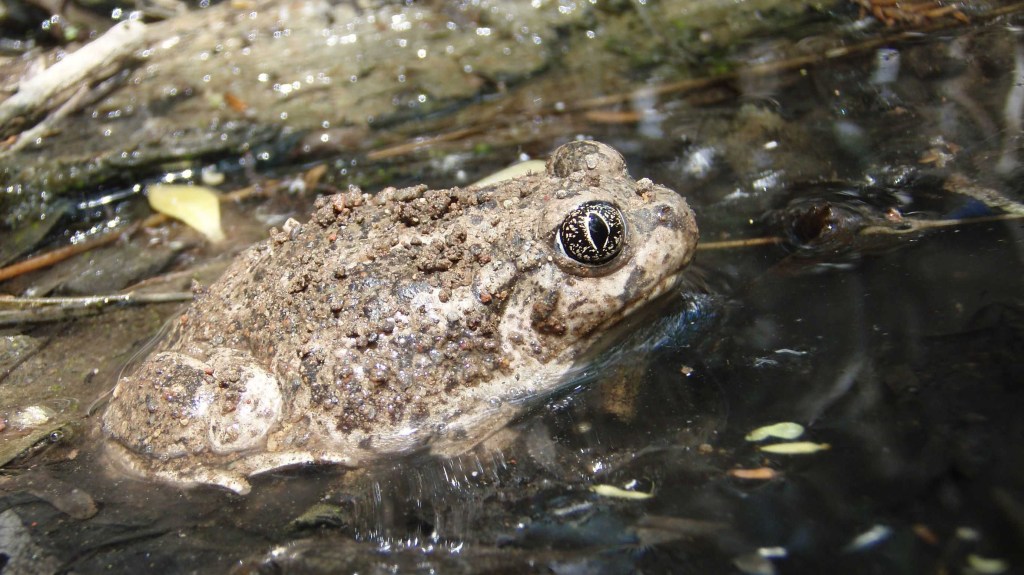There’s a puddle in the desert larger than an umbrella and less than ankle deep. Easily passed over by toes, but not by Great Basin spadefoot toads. It’s a tadpole nursery. Their nickel-sized bodies with tails squirm in a tight bunch all cozy like.
Then the largest in the pod opens its jaws and eats the new life next to it. Cannibalistic tadpoles? Creepy and crazy. Admittedly it’s not as crazy as young tiger salamanders that eat other young salamanders but can smell who they’re related to so they don’t eat siblings. But still crazy.
“Cannibalistic tadpoles could be an adaptation for getting out of the ponds quicker,” says Chuck Peterson, Idaho State University Department of Biological Sciences professor. “They develop special mouth parts that look like little jaws because they’re in this race against time. They feed as quickly as they can.”
Peterson is watching Great Basin spadefoot tadpoles feed. It’s been at least five years since he’s seen them. He finds them at the end of the appropriately named Big Lost River.
The Big Lost dumps into a reservoir in central Idaho. The reservoir’s water is released in controlled measures for miles of irrigation. Some years it goes 26 miles to the next town, Arco, before it dries up. In high water years, like this year, the Big Lost makes it all the way to big desert habitat, covered with lava fields and sinks. There it disappears into the ground, only to reappear up to 200 years later when it bursts out of the Snake River Canyon. In modern times, the Big Lost doesn’t reach the sinks most years, but when it does, the toads find it.
“Spadefoot toads are especially interesting,” Peterson says. “They’re one of the most successful amphibians living in areas with not much water like deserts.”

These amphibians have shovel-shaped back feet with a sharp-spade like structure. That’s how they burrow backward into the soil when the water dries up on the surface. Once they’re deep in the dirt, five to ten feet deep, they stay there until Mother Nature produces another puddle. That could be five to ten years. That’s right: a spadefoot toad might hunker down for a decade. It will be just fine as long as the toads are deep.
“They’re not rare, but they’re difficult to find,” he says. “You can go literally years without seeing them in a location because they spend most of their time underground.”
Peterson studies garter snakes. Snakes eat spadefoot toads. Peterson is in the sinks to see how many tadpoles will turn into toads. He sees hundreds. The opportunistic breeders found romance in the river water finally reaching their burrows.

“We think garter snakes come from several miles around to feed on these toads,” Peterson says. “We’ve seen a decrease in garter snakes at a nearby snake’s den and that’s probably because the toads are not around to feed on.”
Based on the size of the tadpoles, the amphibians mated two weeks ago. The tadpoles need about three weeks to turn into spadefoot toads, but the water is already receding — thus the race against time and the eating of thy neighbor.
“In 1993, the water didn’t last long enough. The toads made tadpoles, but those tadpoles didn’t have time to turn into toads,” Peterson says. “Toads live into their teens so what we hope for is at least every decade or so they get the chance to reproduce.”

There are thousands of toads in the desert. That sounds like a lot, but there isn’t a lot of water, and certainly not the amount of water that used to produce springtime lakes in the 1980s. Water reaching the sinks is a rare event in recent years, but when it gets there the toads come out and so does Peterson.
“I wonder about them during droughts,” he says. “This is not a normal situation out here anymore. If we ever go a really long time, like 20 years, I wonder if the species will disappear from this part of the state.”




This is a fascinating article. I learned much by reading about these toads and their lifestyle. Cannibalism in order to survive. Living underground during the dry until water comes back into the land. So interesting.
Toads are interesting on how they d o things. We.need to.make.every human understand. To leave nature alone sometimes
What I take from this article is not the fact that the amazing toads can survive, but the reason they have to. And that is once again human interference. A dam. That is why the water doesn’t flow as it did, as it should. That poor toad has had to adapt to human interference. Amazing but so wrong. When will humans realize that they cannot and should not control nature? It is not our place.
Cool! I grew up with Spadefoot toads around Cheyenne and Laramie Wyoming. At one point, I heard that a Wyoming subspecies was considered extinct, I’m not sure about the current opinion on this.
Thanks for the article.
Thank you for this fascinating story: Mother Nature continues to provide astounding ways in which wild creatures manage to survive in a world which is fraught with threat — ecosystems which depend upon both weather, access to water and the ability to avoid being eaten by natural predators. Spadefoot toads: opportunistic breeders dependent upon water for procreation and survival of tadpoles, but able to survive despite drought by digging deep into soil until water returns. Their progeny, tadpoles, maturing into toads while on the surface, being threatened by hungry garter snakes … the survivors living underground, waiting for the next springtime to continue the cycle, but facing the likelihood that, because of a fickle water supply, years may pass without the cycle repeating itself. Wow!
Survival of the fittest…Strong eat the weak. Reminds me so much of the United States!
I work with Fowler’s Toads in Rhode Island. They are late season rainfall dependent breeders as well, and my study area is being over run by silt and cattails, so I am hoping to do a bit of restoration thsi fall as the pond will be unusable for breeding in 3 or 4 years without some maintenance.
Thank you for the very interesting article. Life is amazing. Sure hope these incredible toads, and all wildlife, live long enough to see humans kick the fossil fuel habit, slow the pace of climate change, and stop poisoning and building on every inch of the planet.
Very interesting information which I would like to forward on to friends, but could not find how to do this,
– maybe getting them interested in your organization . I’m no computer whiz and at 90 neither twit nor
facebook, whatever the phrase/word would be for forwarding such email.
Thank you: fascinating article.
Thanks for the amazingly informative article. Sending it to my daughters and friends!
I am a former biology teacher. I wish that I was still teaching I would have incorporated it into the curriculum.
Save the Animals.
I really enjoy these nature informative lessons. Please send me more. Lots more.
I wonder how far their habitat extends? I live in the high desert in Southern Colorado, we have toads but flowing creeks too. The past 3 nights a toad has come up to my door, but I didn’t let him in….
I adore learning about toads, always have. Thank you for writing this interesting article.
Best,
Ryn
What an amazing amphibian – good that it can dig deep and avoid both weather producing drought and human beings. Thank you for an informative article.